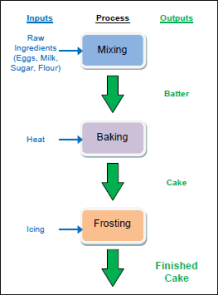Quality Management System
Quality Management System Education and Resources
Search

The History of Quality Management
The history of quality management can be traced all the way back to The Middle Ages. Work completed by journeymen and apprentices were evaluated and inspected by the skilled worker to ensure that quality standards were met in all aspects of the finished product, ensuring satisfaction of the buyer. And while the history of quality management has gone through a number of changes since that time, the end goal is still the same.
It was during the 1920’s when quality management systems, as we know them today, started to surface. While the focus of quality management was still on the end product, it was the first time that statistical theory was applied to product quality control. (more…)

A Simple Guide to Understanding ISO Standards
ISO standards are really a Quality Management System with very specific rules on documentation and record-keeping. ISO is not a replacement for Total Quality Management. In fact, they can co-exist quite peacefully, since ISO is focused on consistency and record-keeping, while TQM is focused on employee involvement and product improvement. Both claim to be customer satisfaction and continuous-improvement oriented, but Total Quality Management is really the better forum for this. In fact, it is the goal of the TQM process.
ISO requires that the same things be done the same way all the time, and it is hard to squeeze customer satisfaction out of that process. (more…)

Benefits of an Integrated Quality System
The first shift in the packaging department reported for work around 7 a.m. After a brief meeting to go over the previous shift’s log, they set about the day’s work. But when the packaging line started running, they knew there was a big problem.
The bags were filling past their normal capacity and then tearing at the sealing station, dispersing powdered material into the air, covering the equipment. Before they could stop the line, at least 50 bags had to be scrapped, the material discarded, and production halted for the rest of the day.
Quality Management Systems
When it comes to satisfying the customer and doing it in a repeatable, scalable fashion, the answer is developing a quality management system. The challenge is that many top managers don’t understand where to start. The goal of QualityManagementSystem.com is to educate both managers and executive leadership on both the benefits and the steps required to implement a quality management system.
We see this education as made up of three major parts:
- appreciating what makes up total quality management (TQM),
- getting your arms around the ISO requirements, and
- understanding how quality management software can make your quest for quality so much more efficient.
The starting point for any quality management system is to get clear on the goals of the organization and the path to meet those goals. This includes setting priorities and timelines for progress and mapping out the critical proceses. You can learn all about this in our section on Total Quality Management.
You must also understand the guidelines set out by the International Organization for Standardization. These ISO standards are the specific industry guidelines on how to document the processes. The focus here is on consistency and complete, easy to follow documentation. While TQM is focused on employee involvement and product improvement, achieving the ISO standards proves your organization is following industry standards. Visit our section What is ISO? to learn more.
Forget the days of many binders on the shelf, the answer is quality software. Quality management software can be a great way to streamline many of the tasks associated with a Quality Management System. Often times, however, we find that the software is adding to the effort to keep the process documentation up to date, instead of saving time. How to determine your requirements and select a the right software for your organization is explained in the quality management software section.
Quality Management Careers
Quality Management Jobs
The best organizations traditionally provide a robust number quality management jobs. You might think that in the age of artificial intelligence and … [Read More...]
Featured Articles
Corrective Action vs. Preventive Action
Quality management systems are built on the premise of continuous improvement. Corrective and preventive action (CAPA) programs are part of improvement efforts, along with auditing, data analysis and reviews. Even though many companies lump corrective and preventive action systems together, these entities are meant to address problems at different stages for effective quality management. Namely, […]
Quality Management Lessons from the Takata Air Bag Recall
The auto industry, especially in the United States, will forever remember the year 2016 for what the NHTSA has referred to as “the largest and by far the most complicated vehicle recall in United States’ history.” Takata, a now infamous motor vehicle parts supplier, is single-handedly responsible for the crisis after it was discovered that […]
Advertise with Us
Quality Management Resources
Copyright © Niche Player, Inc. | Privacy Policy | About | Contact Us